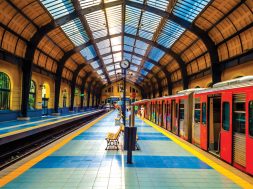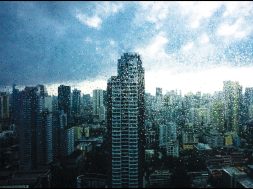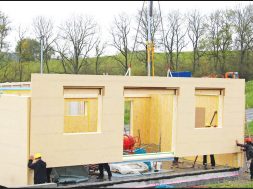Metro Boon or Bane?
Metro rails are 21st century transportation system, but the most important question is how useful will metro rails prove to urban India?
An efficient, well-coordinated transport system always plays an important role in the economic growth of a country. India is a developing country, but it is still facing transport crisis when it comes to stable mass transit system. However, the government is trying its best to make travelling a trouble-free task and upgrade to urban transportation.
When we talk about urban transportation, the conversation bends towards metros. Most of the major cities and towns in India require a 21st century urban transportation system. And to improve the current situation, the government is giving attention to metro projects.
In 1984, Kolkata got India’s first metro rail system. Chennai was next in 1997. Then came Delhi in 2002 followed by Bangalore in 2011. Jaipur, Mumbai, Navi Mumbai and Hyderabad are expected to get metro systems soon. The people are eagerly waiting for metro rail projects to complete in their cities.
Metro rails are 21st century transportation system, which not only makes commuting effortless and time saving but also ease the traffic snarls on the road. However, constructing a metro project is a tricky and long process altogether. One needs to analyse different aspects and opinions for an upcoming metro project. There are many doubts and questions raised, but the most important question is — how useful will metro rails prove to the city?
The right solutionRising population and congested roads have always been the biggest distress in developing cities. And lack of suitable mass transit systems raises more concerns; here metro is considered as the suitable solution for these problems.
According to Venkataraman Rajaraman, Director – Infrastructure and Project Finance, India Ratings, “Metro rails seem to be the latest solution to meet the cities’ infrastructure and traffic decongestion demands. With the start of Kolkata and Delhi Metros and achieving reasonable success in those, the centre has been recommending and participating in equity in all these projects. There is a need for metro rail systems for decongesting the city roads, providing connectivity to the expanding city infrastructure and provision of alternate transit systems, thus releasing the tight capacities of other forms of transport.”Sachin Sandhir, Managing Director, RICS South Asia, says, “The development of infrastructure in our city remains one of the prime targets for the country. With rapid urbanisation of our cities, it is a must that residents have proper connectivity and good means of transportation. While roads have traditionally been the lifeline of our cities, enormous movement of vehicular traffic has been putting pressure on our road network. Thus it was imperative that we bring more robust, parallel mode of transport. Amidst such a scenario, metro offers a good workable solution.”
Sharing his views, Parvesh Minocha, Group Managing Director – Transportation Businesses, Feedback Infra Pvt. Ltd., says, “Facing the challenges of increasing urbanisation, population densification and the traffic habits of its citizens, Indian cities badly need an affordable, safe, reliable and efficient mode of commuting, and metro rail seems to be becoming the most acceptable solution. If it is supported by feeder light-rail and/or buses, its acceptance increases exponentially.”
Above ground vs undergroundBuilding metro is a tricky task, and designing is the most crucial part. One needs to decide if the metro will be above the ground or underground. On one hand, above ground metro is considered to damage city’s look also causing noise pollution and space crunch on roads; and on the other hand underground metros are three times more expensive.
Renowned architect Hafeez Contractor explains, “It is very essential that we have some mass transit. The only thing bothering me is that the metro is above ground. After 5-10 years, we will sense about what damage it is doing. The noise, the dust are urban blight. We cannot have trains in this age above ground with the kind of noise they will be creating.”He further adds, “I would prefer if the metro was underground. If we look at the metro work in Andheri-Kurla Road; it’s a huge mess and looks awful. Metros in Gurgaon where areas are large and no construction around are acceptable. I am not saying you have one yardstick to judge everyone; you have to change. Dense cities like Mumbai cannot have metro above ground. If you are making metro above ground, you are completely out of your mind.”
Saurabh Mehrotra, Director – Advisory Services, Knight Frank India, says, “Underground, above ground or elevated are solutions to a metro when a city is already developed. For example, when you don’t have land, the ideal situation for a metro to run is on ground — there is no need to go underground or elevated. Because you would rather not do elevated metro you would rather do an under pass or an over bridge for the road other than doing a metro bridge.”
According to Ravindra Kumar, Principal Architect, PRAGrup, execution of an underground metro requires qualified planning and guide lines. He explains, “Metros have been in use in many cities. However the ones executed over ground is a disaster calling. If you mark the transformation in historically significant urban cities like London, Paris, Vilnius or Amsterdam the trams or the underground network system works super efficiently. The system incorporation is over a few decades and efficient due to qualified planning regulations and guidelines. If you are connecting multiple cities, the reason to go over ground is substantiated for budget reason; however, this method cannot intrude into a city for metro. This is an obvious novice answer. We do not want to lose the skyline of any city. It blurs the image of a city, it’s historical significance. Definitely in our part of the world, it is a disaster to have it over ground.”
Prof K. Jaisim, one of India’s prominent architects and founder of Jaisim-Fountainhead, nicely described the problem associated with the above ground metro. He points out, “By the time metro rail is even halfway through, it will be outdated.” He even claims that metro rail is a monster, devouring land, space and money.
Master planCities play a vital role in generating economic growth, and city planning and urban transport are two important factors contributing to it. Today urban transport and city planning are seen as distinct divisions. But for better transport system and development of cities, they’ll have to merge.
According to Mr Mehrotra, “The newer cities which are being planned, there urban planners have already thought of this and have planned for dedicated metro networks on ground, without any need of going underground or elevated. At the end of the day, going underground or elevated significantly increases the cost of metro network.”
Pushing real estate pricesWhen it comes to investing in commercial or residential properties, connectivity is one of the key factors. Though full-fledged metro rail works are yet to commence in cities, land prices on the proposed routes have already shot up. Metros providing improved connectivity and infrastructural developments are likely to fuel real estate prices.
Mr Sandhir says, “In an indirect way, metros would push the real estate prices up in those areas where the metro line is being planned. Realtors bringing housing in these cities are now focusing especially on those localities that have come under the metro proposed routes. Presence of a metro network adds value to the housing project and helps development firms put a higher price tag on the property on offer.”
Mr Minocha already observed surge in real estate prices in Delhi and Mumbai due to metro rails. He adds, “Metros have a significant impact on the landscape of a city as a whole. Therefore, a fine balance needs to be stuck between the cityscape and cost of providing this public utility. In Delhi NCR and Mumbai, we have witnessed how real estate prices start moving north in the areas which are covered by metro rail project. The metro rail has indeed become a matter of pride and joy for city residents.”
Transforming Indian citiesThe metro rail will definitely transform Indian cities. From urbanisation perspective, metro rail project would benefit tremendously as it will boost connectivity different regions. Metros will prove to be the catalyst for major economic growth in the area. Metros are a part of an attempt to develop Indian cities.
Mr Mehrotra believes, “Even though development period of metro is excruciating, but it is a part of developing the city. What we are seeing at the moment is the painful which is the development phase, where we are seeing a lot of issues like traffic etc., but as a long-term phenomenon, this is an excellent thing. We are a little late but thankfully, we are working on it and most of all the thought process, now metro corridor and networks are being planned as a part of city development.”
“We strongly believe that metros would play a pivotal role in integrating the existing transit systems and add value to the city’s transport. Government’s involvement would provide stable, realistic tariff and budgetary support required to operate the system,” Mr Rajaraman concludes.
Ar Hafeez Contractor _ Dense cities like Mumbai cannot have metro above ground. If you are making metro above ground, you are completely out of your mind———————————————————–
Parvesh Minocha, Group MD – Transportation Businesses, Feedback Infra
…Indian cities badly need an affordable, safe, reliable and efficient mode of commuting, and metro rail seems to be becoming the most acceptable solution————————————————————-
Saurabh Mehrotra, Director – Advisory Services, Knight Frank India
Even though development period of metro is excruciating, but it is a part of developing the city. What we are seeing at the moment is the painful which is the development phase————————————————————-
Sachin Sandhir, Managing Director, RICS South Asia
While roads have traditionally been the lifeline of our cities, enormous movement of vehicular traffic has been putting pressure on our road network. Thus it was imperative that we bring more robust, parallel mode of transport————————————————————-
Venkataraman Rajaraman, Director – Infrastructure and Project Finance, India Ratings
We strongly believe that metros would play a pivotal role in integrating the existing transit systems and add value to the city’s transport————————————————————-
Ravindra Kumar, Principal Architect, PRAGrup
We do not want to lose the skyline of any city. It blurs the image of a city, it’s historical significance. Definitely in our part of the world, it is a disaster to have it over ground
217
Cookie Consent
We use cookies to personalize your experience. By continuing to visit this website you agree to our Terms & Conditions, Privacy Policy and Cookie Policy.









